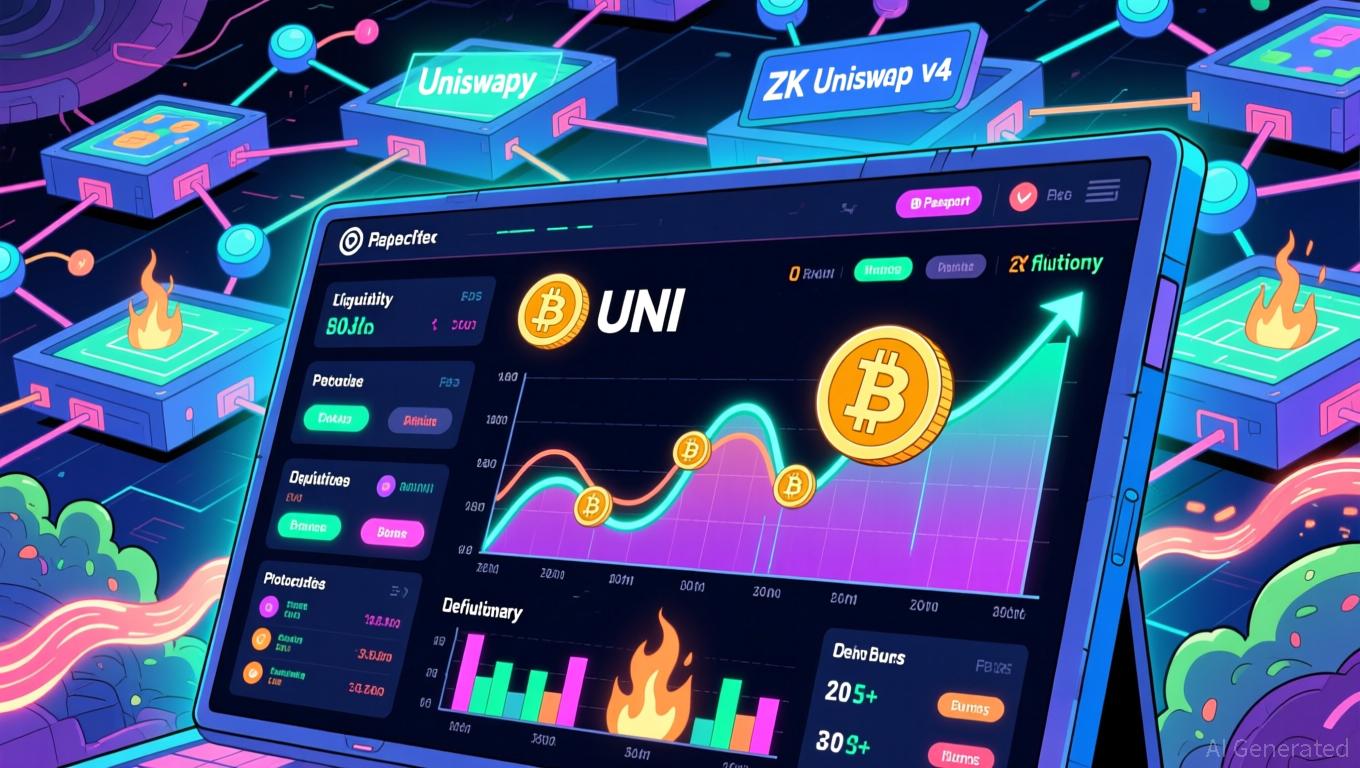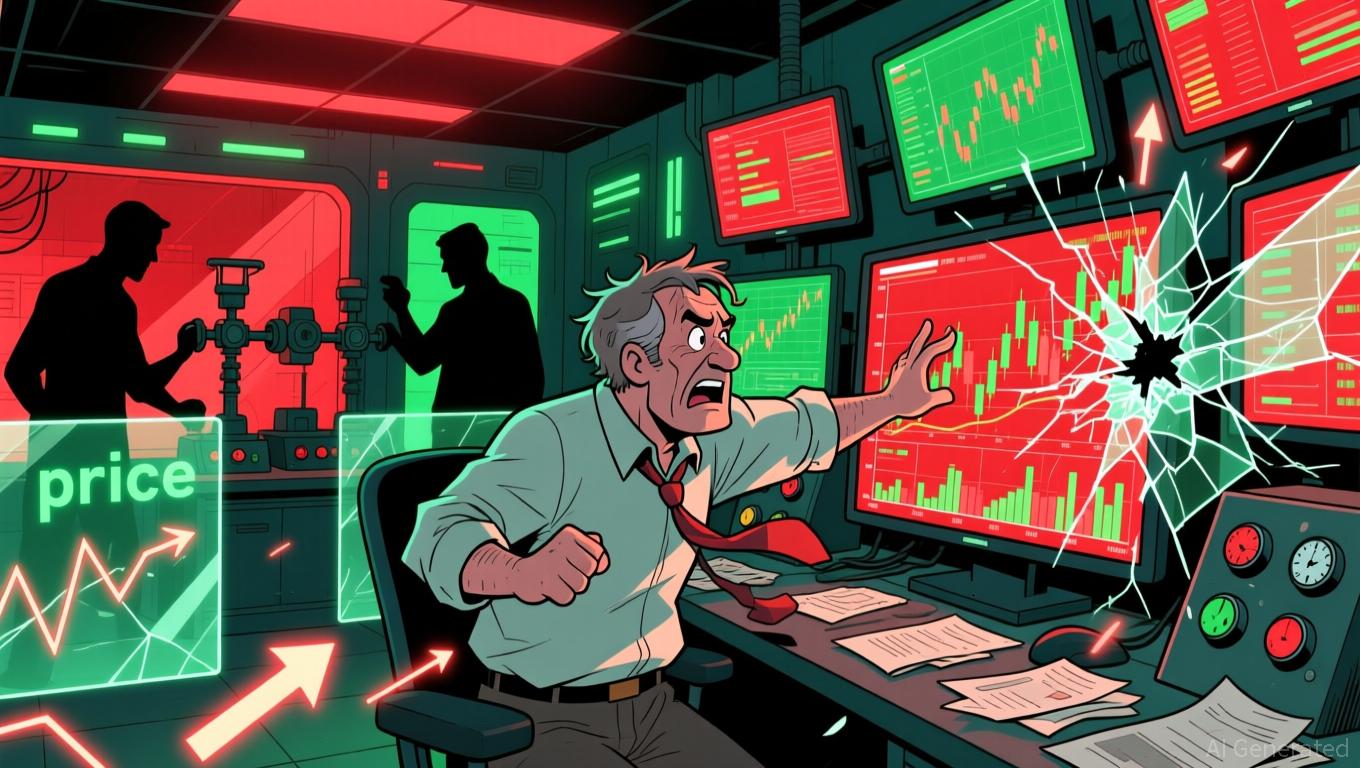ZK Atlas Enhancement and Its Influence on Layer 2 Scaling
- The ZK Atlas Upgrade (Oct 2025) revolutionized Layer 2 scalability with 15,000+ TPS and $0.0001/tx costs via innovations like Atlas Sequencer and Airbender prover. - Vitalik Buterin's GKR protocol reduced ZK verification costs 10-15x, slashing Ethereum gas fees by 90% and boosting DeFi competitiveness. - ZK ecosystem TVL hit $3.5B by 2025, with $15B in Bitcoin ETF investments and 60.7% CAGR projected for ZK Layer 2 market growth to $90B by 2031. - Institutional adoption accelerated as stablecoins capture
Key Features of the
ZK
Atlas Upgrade
The ZK Atlas Upgrade brought forth three major breakthroughs: the Atlas Sequencer, Airbender prover, and ZKsync OS. Together, these innovations allow ZK protocols to
Importantly, the upgrade also incorporated Vitalik Buterin’s innovation with the GKR protocol, which

Developer Activity and Ecosystem Growth
The ZK Atlas Upgrade has sparked a notable increase in developer participation and ecosystem expansion. Bitget’s research shows that the total value locked (TVL) in ZK rollups—including zkSync,
Metrics on developer engagement further demonstrate the upgrade’s influence. ZKsync Era’s daily and weekly active wallet counts have soared, surpassing many Layer 1 networks. The ZK ecosystem has also
Institutional Adoption and Market Trends
The ZK Atlas Upgrade has propelled institutional involvement, especially within DeFi and stablecoin markets. Stablecoins now represent 30% of all on-chain crypto transaction volume,
Institutional funding has also grown, with spot Bitcoin ETFs channeling $15 billion into ZK-related ventures in 2025. This momentum is projected to persist, with estimates suggesting a 61% increase in institutional crypto allocations by 2026,
Challenges and Risks
Despite its advantages, the ZK Atlas Upgrade is not without obstacles. Regulatory oversight remains a pressing issue, particularly for privacy-oriented coins like Zcash. Furthermore, the technical demands of ZK technology—which require expertise in cryptography and distributed systems—may hinder adoption among smaller development teams.
Future Outlook and Investment Potential
The ZK Atlas Upgrade has established a foundation for scalable and affordable blockchain systems. With Ethereum’s “Lean Ethereum” initiative and the industry’s broader move toward Layer 2, ZK protocols are poised to lead the next wave of crypto growth. Investors should keep an eye on TVL trends, TPS gains, and institutional capital flows.
Nonetheless, prudence is necessary. Although the long-term perspective is optimistic, short-term market swings and regulatory ambiguity could affect returns. Spreading investments across various ZK projects (such as zkSync and StarkNet) and managing privacy coin exposure may help address these risks.
Conclusion
The ZK Atlas Upgrade marks a pivotal point for blockchain scalability. By tackling throughput, expenses, and interoperability, it has opened up new opportunities for DeFi, institutional finance, and international payments. For investors, the upgrade’s success will depend on ongoing developer involvement, regulatory progress, and sustained institutional interest. As the ZK ecosystem evolves, it presents a strong case for long-term investment in the post-upgrade landscape.
Disclaimer: The content of this article solely reflects the author's opinion and does not represent the platform in any capacity. This article is not intended to serve as a reference for making investment decisions.
You may also like
Uniswap News Today: Uniswap's UNIfication Launches a New Era of DeFi Leadership for the Next Decade
- Uniswap's UNIfication proposal introduces protocol fees, token burns, and buybacks to transform UNI into a deflationary asset. - The plan drives UNI's 63% weekly price surge and allocates 0.3% trading volume to liquidity providers and buybacks. - Whale accumulation and $38M/month buyback projections signal strong market confidence in Uniswap's governance overhaul. - The proposal unifies Uniswap's ecosystem, introduces fee discounts, and launches CCA for institutional-grade liquidity infrastructure. - DeF

Hyperliquid News Today: Hyperliquid's 0x9ee Whale Makes $241M in Bold ETH and ASTER Wagers
- Hyperliquid's largest ZEC short position incurred $21M in unrealized losses amid crypto market volatility. - HYPE token fell below key levels as liquidity challenges worsened after a $5M market maker loss from Popcat manipulation. - Whale address 0x9ee holds $241M in ETH/XRP long positions and a 3x ASTER short with mixed $13.7M unrealized gains/losses. - Abraxas Capital shifted from ASTER shorting to long positions, generating $750K profits amid shifting market sentiment. - HYPE faces technical breakdown

Trump’s Team and Wall Street Join Forces to Revamp Mortgages, Cryptocurrency, and Around-the-Clock Trading
- Trump's administration collaborates with Wall Street leaders to address rising mortgage rates and inflation through policy reforms and market strategies. - Treasury and Commerce officials emphasize leveraging financial expertise to stabilize housing costs and implement broader economic measures including immigration policies. - Galaxy Digital's crypto growth and Nasdaq's 24/7 trading plans highlight evolving financial innovation amid regulatory challenges and investor reentry into digital assets. - Exten

Hyperliquid News Today: Crypto Volatility with Leverage: Major Players Gain, Bears Suffer Losses
- A "smart money" address (0xbbc0) earned $2.5M profit via 5x leveraged STRK tokens, buying 29.5M at $6.7M. - Same address opened 10x leveraged HYPE position with $2.98M, showing speculative crypto confidence. - Another whale reduced 5x HYPE position to $48.41M but faces $2.02M unrealized loss as of Nov 14. - STRK/HYPE trades highlight leveraged crypto volatility, with HyperLiquid seeing $5M deposits for similar positions.
